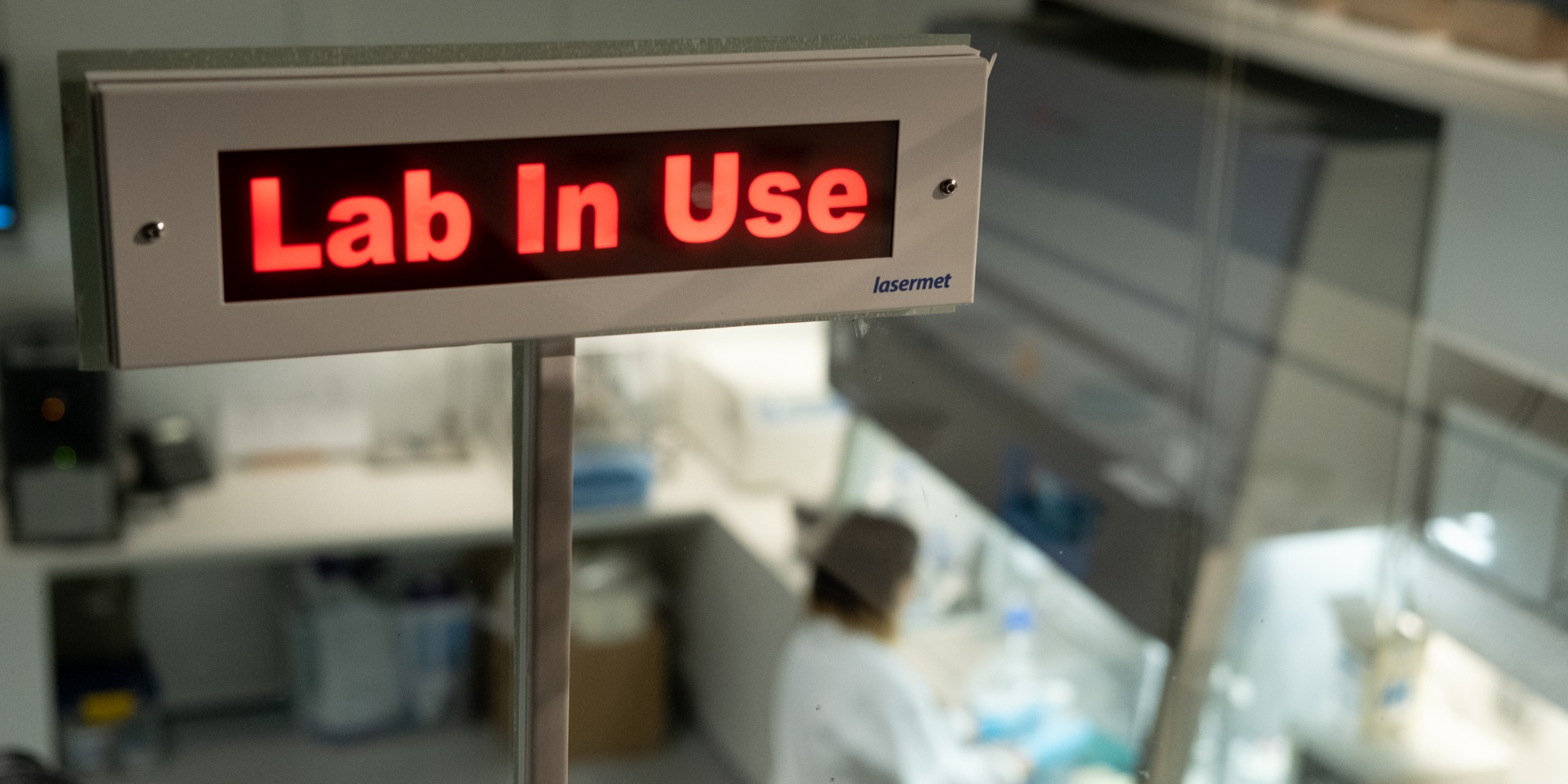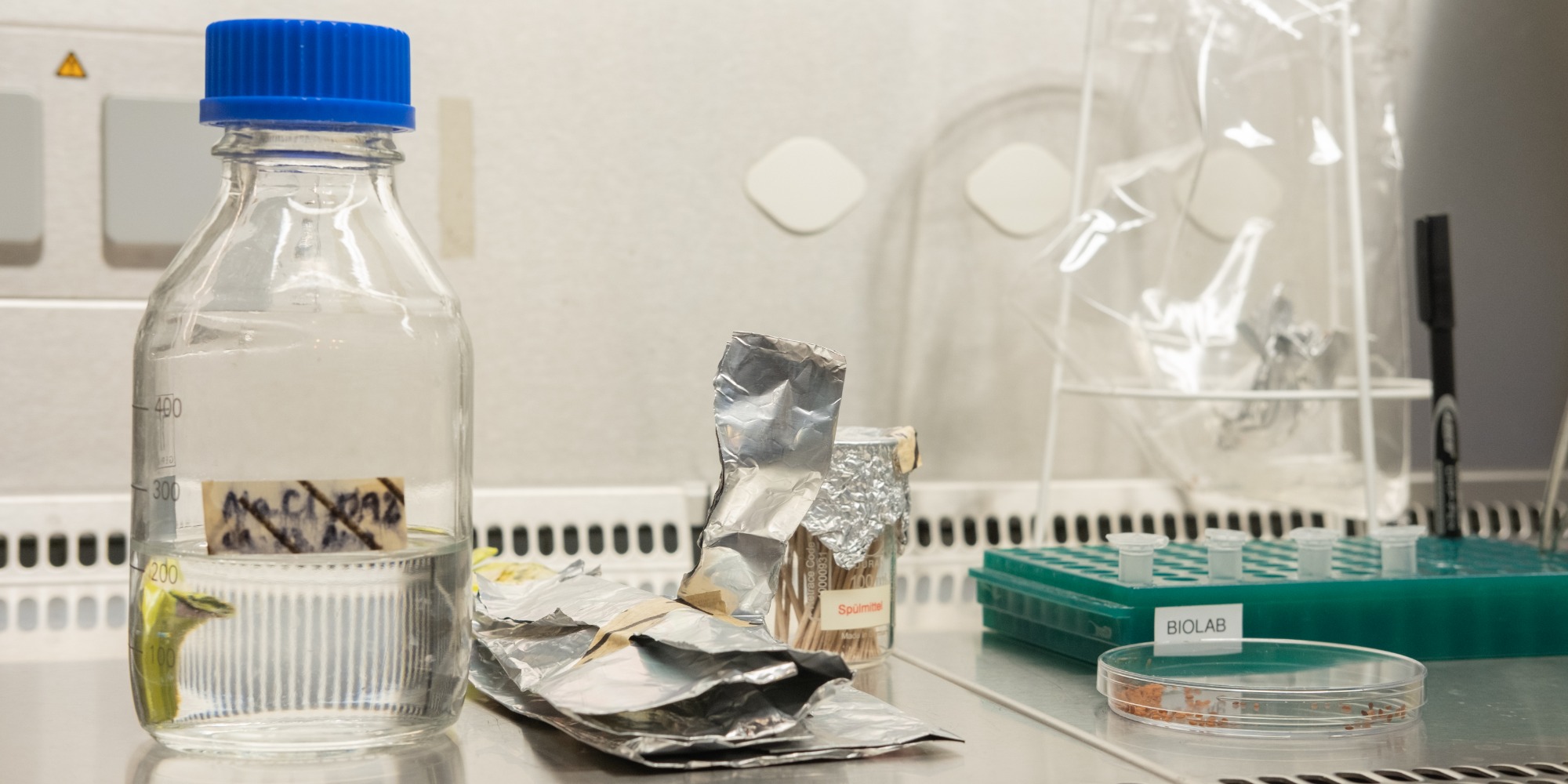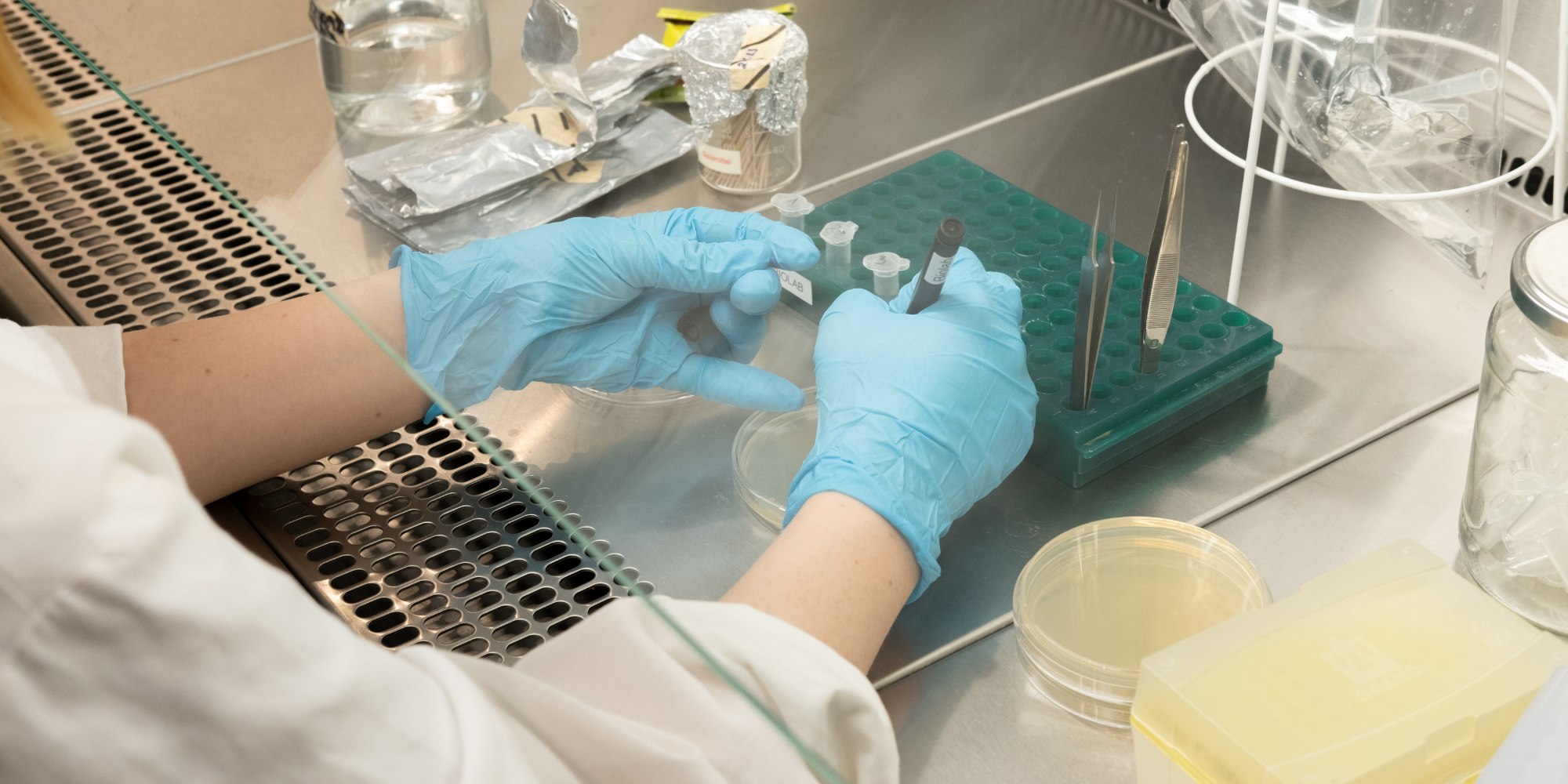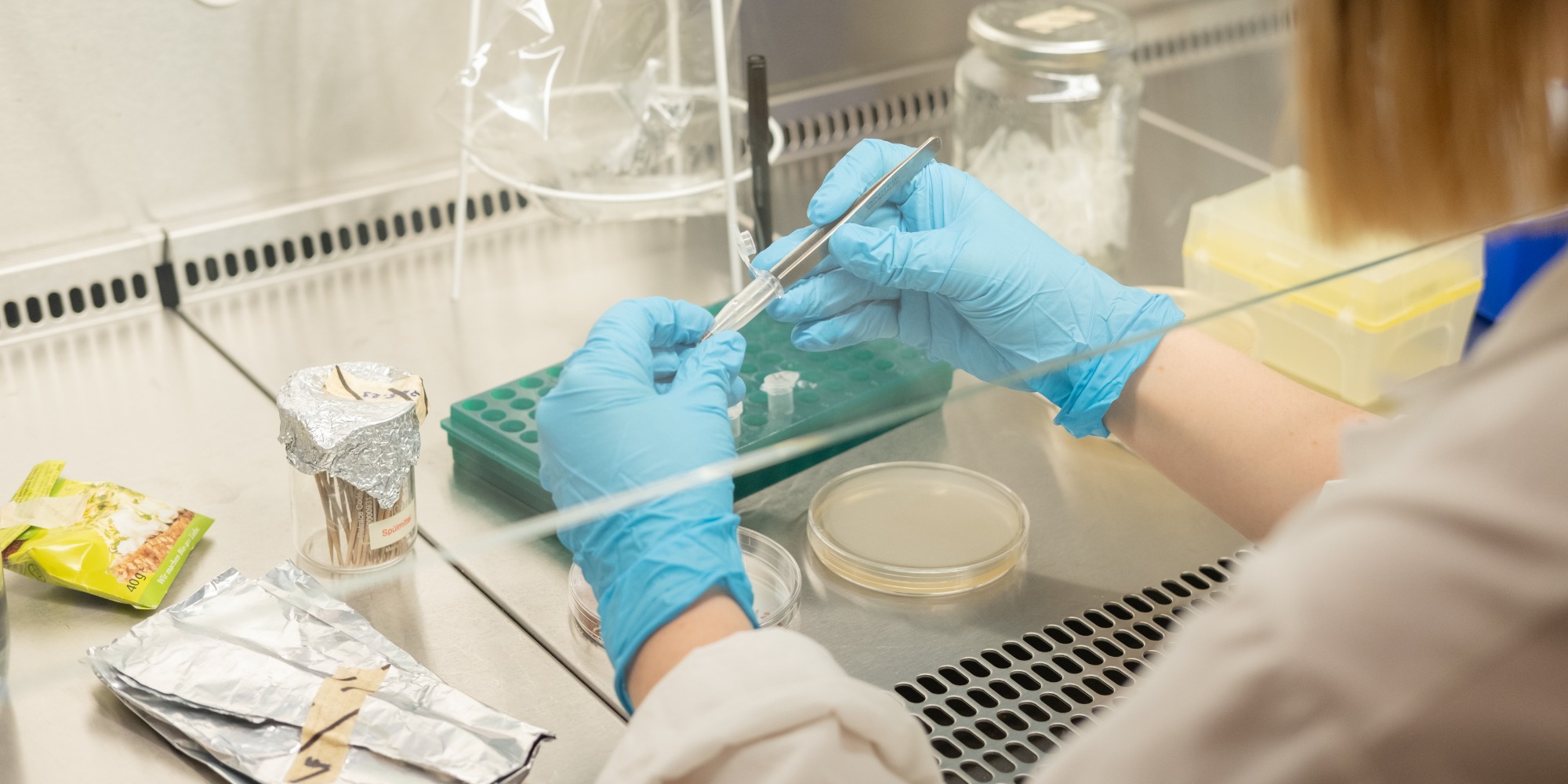The European Media Art Platform (EMAP), initiated by werkleitz and co-funded by Creative Europe since 2018, is a consortium of 15 leading European media art organizations specializing in digital and media art, bio art, and robotic art. Through an open call, EMAP members offer residencies to practitioners, building on the legacy of the European Media Artist in Residence Exchange (EMARE), which has been in place since 1995.
Following an international open call that received 641 applications from 35 countries, the choice for the 2023 selected artist was Ljubljana-based post media artist Dorotea Dolinšek. With her proposal, “Biosymbiotic Exoskeleton” the artist explains exciting possibilities for an interplanetary existence. We caught up with Dorotea to learn more about her project and her residency at the Ars Electronica Center‘s BioLab.

What made you decide to participate in the EMAP residency?
Dorotea Dolinšek: As I was working on my newest project with Kersnikova Institute, who are co-producers of Biosymbiotic Exoskeleton, I actively searched for a suitable facility where I could fully develop it. Considering the nature of my project, I realized that Ars Electronica would be an ideal location. Additionally, EMAP specifically caters to young emerging artists, making it a favorable opportunity for me. It is worth noting that I persistently applied to EMAP open calls multiple times, and I am thrilled to have been now granted this chance.
Can you tell us a little bit about what you are working on during your residency?
Dorotea Dolinšek: This upcoming project marks the third installment within my ongoing investigation of extreme environments and the narratives they offer. The previous two projects delved into the ecological dynamics of outer space, focusing on the intricate relationships between biological entities. However, this particular endeavor shifts the focus inward, delving into the ecology of the human body itself. What caught my attention was the fact that other living organisms that inhabit a human body, such as bacteria, fungi and viruses, outnumber human cells by 10 to 1. It led me into contemplation, that the non-human other confronts the extraterrestrial within the intimacy of the human body – our microbiome. Even when we undergo extreme sterility and travel beyond Earth’s atmosphere, emancipate ourselves completely from the earthly environment, we are not really alone and isolated. Specifically, I draw inspiration from the space suit, which, in my opinion, represents the ultimate detachment of the human habitat from nature. It serves as a significant milestone in our quest for emancipation.
Throughout history, our habitats have evolved from caves to houses, and now, the space suit. These unique environments intrigue me as they create a complex battleground between humans and other organisms. When we venture into space, away from Earth, we begin to realize the profound connection we share with our earthly environment. Every microorganism that resides within us, such as fungi and viruses, undergoes dysbiosis, reflecting the consequences of our detachment and the lack of relating. This occurrence serves as a compelling example of how our well-being is intricately tied to our ability to form relationships.
In light of these insights, I plan to construct a space suit, which I have named the “biosymbiotic exoskeleton.” Instead of striving for sterility, my intention is to actively incorporate other organisms into this structure. Algae will play a prominent role, and in the lab, I am also exploring the potential of tapping into my own microbiome. By embracing the presence of diverse life forms, I aim to cultivate a symbiotic relationship that acknowledges our inherent need for connection and interdependence.

Have you encountered any unexpected challenges or insights while you’re working on this project?
Dorotea Dolinšek: As I delve into the lab work, I’ve come to realize that plans often undergo unexpected transformations. Despite initially intending to solely gather samples from my belly button, I’ve discovered alternative approaches that prove to be more effective. Adaptation and methodological adjustments have become an integral part of my current stage, where I am actively developing the protocol for the microbial inoculation process. This ongoing evolution ensures that the project remains fluid and open to change.
How did you first become interested in the radical environment of outer space?
Dorotea Dolinšek: Having received training as a painter, my natural inclination led me towards exploring the realms of outer space and alternative habitats. However, I soon came to the realization that merely depicting technology through my artwork was insufficient—I yearned to actively utilize it as a tool and something to reflect upon. Outer space, in particular, captivated my interest due to its ability to challenge our perceptions of being human, both on Earth and in the vastness beyond. The extreme and radical environment of space forces us to critically reconsider every aspect of our existence, which intrigues me to a great extend.
While space is often seen as the realm where the most advanced version of humanity should emerge, I began to question the infrastructure that underpins our presence there. It became evident to me that this infrastructure itself speaks volumes about our inherently anthropocentric way of existing on Earth. As a result, infrastructure, tool, technology and survival strategies became a recurring theme in my project. However, I didn’t simply recycle it; instead, I adapted it to fit into the narrative I sought to convey.
Delving further into the exploration of outer space, I gradually came to recognize that Earth itself is undergoing a radical transformation. The anthropocentric manner in which we inhabit our planet is contributing to an increasingly radicalized environment. This realization further fueled my artistic endeavors, pushing me to explore the intricate relationship between humanity, non-human agents, technology, and the accelerated changes of our earthly home.

And what are the next steps for this project?
Dorotea Dolinšek: I am currently stationed at the Ars Electronica Center’s BioLab, where I will be dedicating my time until the end of June. This space serves as my primary workspace for the project, where I collaborate with scientist Anastasia Bragina. Simultaneously I am remotely developing the exoskleletion-design with designer Barbara Susnik. Upon returning to Kersnikova Institute, we have plans to construct the technological part of the project together with artist Dimitri Morozov. I feel grateful to collaborate with such an exceptional assemblage of wonderful experts. Once the project reaches its completion, it will be showcased at the highly anticipated Ars Electronica Festival, scheduled to take place in September. This prestigious event will serve as a platform for presenting the finished outcome of our collective efforts.
Any plans for the future?
Dorotea Dolinšek: My focus is on the current, ongoing pursuit of cultivating and expanding my artistic practice.
Do you have any tips for aspiring media artists who want to participate in residences?
Dorotea Dolinšek: When it comes to applying for EMAP, I believe it is essential to carefully consider and select the right partner and institution to collaborate with. Having a strong idea, accompanied y a well-thought-out plan, is of course crucial. Then again, what might be even more crucial is the flexibility one should possess to turn everything one has made upside down or even destroy in order to get to the core of the initial point of departure.
This and other exciting projects will be on display at the Ars Electronica Festival from September 6 to 10, 2023.

Dorotea Dolinšek is Ljubljana based post media artist. She holds a bachelor degree in painting that she gained at Academy of fine arts in Venice. Currently, she’s working on her master thesis at Academy in Ljubljana, Video and new media art department. She’s collaborating with Kersnikova Institute (Kapelica Gallery) since 2020. In 2021 she received a student award at the International Festival of Computer Arts in Maribor, Slovenia.
